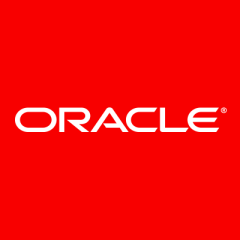
Oracle BI Applications Room for Improvement
RM
Rehman Mohar
Senior Manager, Software Engineering Client Reporting at a financial services firm with 10,001+ employees
It is very cumbersome and slow for making any changes. It doesn't have that many visuals to show different graphs and charts. It should have more visuals. It also doesn't support HTML5, which is useful for interactive sessions and reporting with dashboard etc. We are phasing it out because we need a newer platform that provides us more flexibility and more designs. Our use case is just to get the utility type of monthly reports, and we need visuals, customizations, columns, and certain sections on the report to show performance and other things.
They are not updating their BI Publisher product, which was known as XML Publisher before Oracle bought it. It could be because they don't have that many clients using it. We are using it because we have this solution for years.
View full review »RP
Rodolfo Patiño
SubDirector of Project Management at DISH
One area for improvement would be integration. We've had problems with bottlenecks when creating the data warehouse because we didn't have all the information available. Integration also isn't as easy with Oracle BI as with other tools like Power BI or Tableau. In the next release, I'd like Oracle to include the ability to integrate with information that comes from large sources.
View full review »AM
Andy M
Contractor Logistics Support IPT Lead with 5,001-10,000 employees
For Oracle BI you have to use the Oracle data integrator, which ideally a software engineer would use. With Power BI, you can transform and clean your data with about the same knowledge curve as a power user of Excel. The chart interface with Power BI is easier to use.
I would improve the Oracle BI charting to make it easier.
I would also improve the process to develop ad-hoc reports. To view the development of an ad-hoc report, you have to pass a date parameter.
View full review »Buyer's Guide
Oracle BI Applications
September 2025
Learn what your peers think about Oracle BI Applications. Get advice and tips from experienced pros sharing their opinions. Updated: September 2025.
870,623 professionals have used our research since 2012.
- Financial
As with any case study that we’ve ever done, it’s not so much a problem with the application or security or anything of that nature. It’s basically the cost infrastructure. Compared to other solutions, it’s one of the more costly solutions out there. It’s the biggest concern nowadays that upper management has.
As far as costs are concerned, as their current version of SQL Server is now on a Linux platform, it's now become something that we are starting to look at it. It is something that we would actually consider now as something that we migrate to.
If we go to the cloud, cost-wise, Microsoft is cheaper than Oracle. In the end, it goes back to cost.
View full review »There are upgrade issues, but we have heard that they are being fixed. There are some JVMs in the product that are outdated as well, and there are some default configuration parameters that it would be nice for Oracle to fix instead of leaving them up to the implementers to tweak the settings after the fact. This is a known thing, so it is something that could easily be corrected in the future.
View full review »Buyer's Guide
Oracle BI Applications
September 2025
Learn what your peers think about Oracle BI Applications. Get advice and tips from experienced pros sharing their opinions. Updated: September 2025.
870,623 professionals have used our research since 2012.



